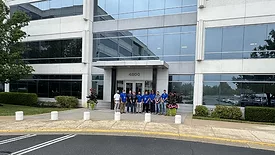Home » Keywords: » engineers
Items Tagged with 'engineers'
ARTICLES
These Enclosures are designed to protect robotic processes from contamination.
Read More
Precis promotes Jeff Crozier, PE, LEED AP BD+C, CEM, to project executive
Crozier has more than 25 years of experience in technical engineering and product management.
September 11, 2025
Henderson Companies opens Washington, D.C., office to tap into booming data center market
National design and construction firm establishes its 15th U.S. office in nation’s capital.
August 20, 2025
ASA Voice of Engineer Survey now live
American Supply Association seeks input from specifiers, architects and engineers.
August 11, 2025
2025 Mechanical Contractor of the Year: Arden Engineering Constructors
One partner, full building solutions
August 8, 2025
Balancing environmental responsibility and effectiveness in fire protection systems
Trends driving the future of fire protection design and construction.
April 22, 2025
Guard on Compliance | Misty Guard
The need for increased vigilance in an uncertain environment
Trump Administration actions that could affect raw materials.
April 9, 2025
Bradley supports STEM career event for female students
Students in grades 7-12 explore opportunities in science, technology, engineering and mathematics.
March 21, 2025
Backfill and bedding
Installing underground plumbing: Understanding field conditions
February 13, 2025
Keep your content unclogged with our newsletters!
Stay in the know on the latest plumbing & piping industry trends.
JOIN TODAY!Copyright ©2025. All Rights Reserved BNP Media.
Design, CMS, Hosting & Web Development :: ePublishing












